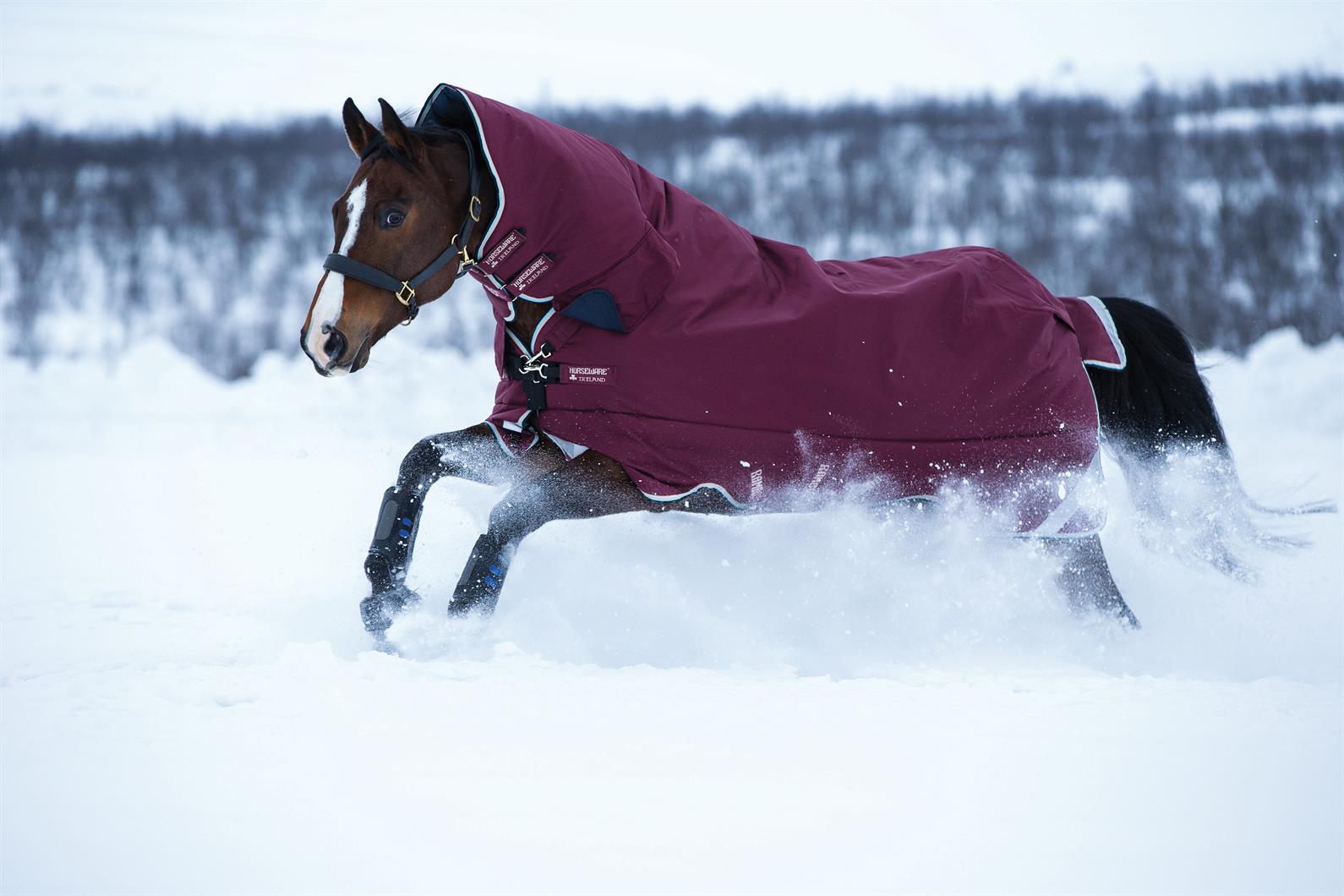When temperatures drop, many horse owners’ thoughts turn to blankets. And with horse clothing choices ranging from summer scrims to heavyweight blankets with attached neck covers for deepest midwinter, it’s no wonder they often find themselves wondering which blanket best suits their horses and the weather conditions. Fortunately, we've got great resources to help, starting with the video "Blanketing 101" with top eventing groom Emma Ford in our online Learning Center. We also asked Hagyard Equine Medical Institute’s Dr. Rhonda Rathgeber and Horseware Ireland’s Caoimhe Derham for their advice on blanketing.
Not all horses need blanketing (or “rugging”), according to experts, because a full winter coat is well designed to protect the horse from the cold.
“That coat gets heavy in the winter for a reason, and it stands on end and acts as a layer of insulation when it gets cold to keep the body warm,” said Rathgeber.
“I don’t think any of them need blanketing if it’s dry outside and there’s no wind,” Rathgeber said of unclipped horses with a full winter coat. “But horses that are clipped do need to be blanketed probably anywhere from 40 degrees Fahrenheit and below.”
When to Blanket?
A good rule of thumb for blanketing unclipped horses is consider three factors: wind, wet, and cold. If any two of those conditions exist, it’s as well to toss on some sort of blanket, although unclipped horses who are healthy and fairly young will not normally need heavy blanketing. Be sure to keep water- and windproof blankets on hand, too, for those inclement conditions.

Age and general health are also factors in determining when to blanket.
“Older horses have a harder time staying warm, and thinner horses do, as well,” Rathgeber said. “Horses that are recovering from illness also have a hard time trying to keep warm while using their energy to try to heal or get over their ailment at the same time. Those are all horses that, even if they’re not clipped, don’t fit the normal mold of blanketing only when it’s windy and cold.”
Horses that have been kept under lights, either for breeding purposes or to keep their coats shinier and thinner, also will need extra consideration if they move to colder climes.
Denier, Fill, and Waterproofing
If your horse does need blanketing, look for something strong, waterproof, and breathable, advises Horseware’s Caoimhe Derham, who spent five years in the company’s research and development department before becoming their category planner.
“A turnout rug’s job is to protect the horse from wet and allow the skin to breathe,” Derham said. “The main things to look for are the strength of the fabric, to help prevent nicks and tears in your rug from daily use. You should also look for a rug that has a high waterproofness and breathability rating. All Horseware rugs are waterproofed to 3000 mm and breathable to 3000 g.”
Two terms to be familiar with about blankets are denier and fill. Here’s a rule of thumb: the higher the denier, the sturdier the fabric. Fill, also known as polyfill, is the batting inside the blanket. The fill weight indicates how heavy or warm the blanket is: lightweight blankets generally are around 100 grams to 200 grams, medium weights are often around 200 grams, and heavyweights can be 350 grams or more.
Today’s turnout blankets have come a long way from the old canvas sheet of yesteryear, thanks in part to improvements in fabric strength, coatings that aid waterproofing and breathability.
“Our Rambo and Rhino range use the Aquatrans coating for the outer, with a hydrophilic coating on the inner,” said Derham. “Hydrophilics take up the sweat to push it out through the hydrophobic outer, which makes it waterproof. This technology allows us to give a waterproof guarantee on your Rambo rug for three years.”
Liner systems also add convenience by allowing for different weights of blanket under a single outer layer. And if they’re machine-washable like Horseware’s, they can also help keep your horse’s skin healthy, notes Derham. Regularly clean your horse’s liner or the skin-facing side of his blanket—whether by fully washing or sponging with a cleaning agent like Horseware’s Hypocare—to prevent bacteria-friendly dirt from building up.
Keep Up With Repairs
“Make sure that your blankets are in good order before you use them,” Hagyard’s Rathgeber said. When you put them on your horse, double-check that all closures are correctly snapped and secured.
“Make sure the straps hook securely,” Rathgeber said. “We do see injuries every year from horses who got wrapped up in their blankets somehow because they weren’t secured properly. Most of the newer blankets have really good clips and they stay. But when clips get older and bent and out of whack, it’s time to get in touch with one of the blanket-repair places out there.”
Send your blankets for cleaning and repairs well before you need them, then store them in a clean, secure place—like a clean plastic box or trunk—until you need them again.
Want articles like this delivered to your inbox every week? Sign up to receive the Equestrian Weekly newsletter here.
This article is original content produced by US Equestrian and may only be shared via social media. It is not to be repurposed or used on any other website than USequestrian.org.


